First drive: Lamborghini Huracan Sterrato in California, USA
Just when you thought Lamborghini couldn’t possibly come up with any more Huracan derivatives, the Bolognese Raging Bull has unleashed arguably the wildest take yet on its mid-engined V10 supercar – the rugged looking Huracan Sterrato.
The newcomer is touted as an all-surface supercar that’s equally at home on tarmac or gravel roads, adding a newfound level of versatility to the Huracan. Limited to just 1499 units, the Strerrato will slot in between the Tecnica and STO when local deliveries commence towards the end of this year, with an entry price of over AED 1.1 million – and that’s before any personalisation options are added.
A bespoke suspension setup and all-terrain tyres are merely the starting points of a revamp that could attract a new set of buyers to the Huracan. The Huracan Sterrato has arguably only one direct rival – Porsche’s recently launched 911 Dakar, which is priced at AED 870k.
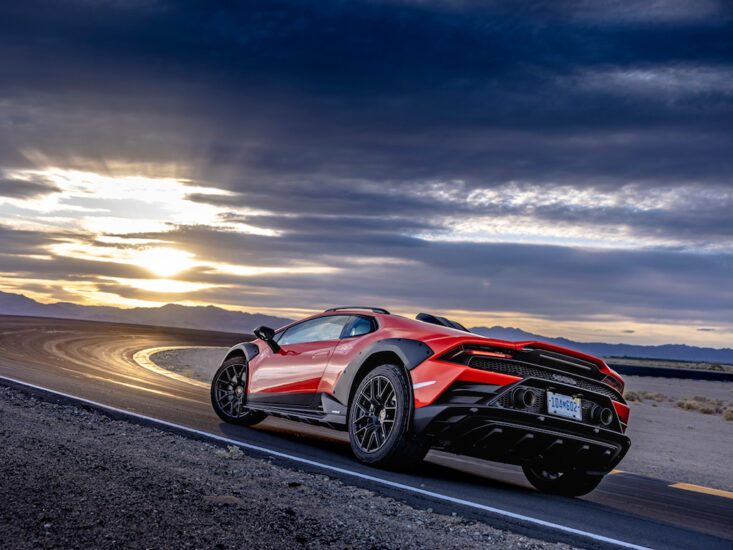
Transforming a car initially conceived to excel on racetracks and winding bitumen roads into a dirt-track hero required a wholesale re-engineering job, with the first step being to add to the donor car’s limited ground clearance and suspension travel.
This was achieved via a bespoke set of springs and dampers all-round, along with unique anti-roll bars and reinforced suspension arms with revised geometry. The result is an extra 44 mm ground clearance, which means the car sits 171 mm off the deck – more or less on par with an average compact crossover.
Apart from added ground clearance, the Sterrato also has more wheel travel than other Huracans, enabling it to soak up much of the pounding when blasting across gravel roads.
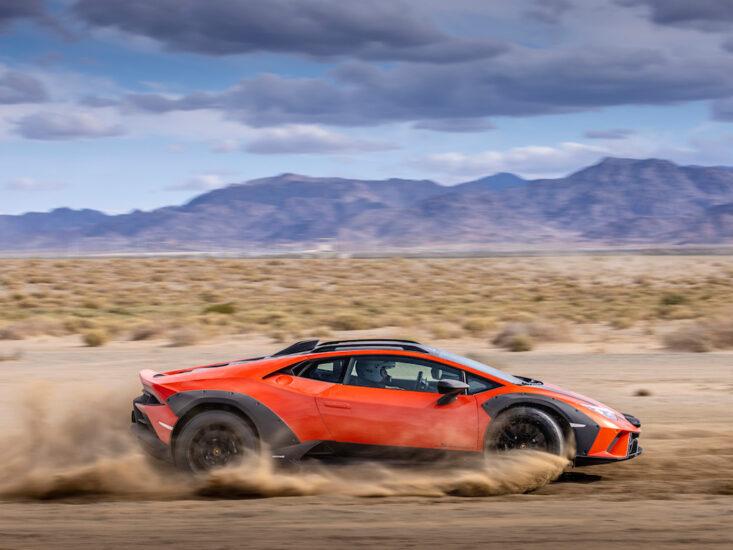
In addition, front and rear wheel tracks have been pushed out by 30 mm and 34 mm, respectively, giving the Sterrato a broader road footprint. The wider stance is made all, the more evident by plastic wheel arch flares that protect the fenders from light-duty impacts with bushes and low-hanging branches.
Lamborghini worked with Bridgestone to develop a special set of Dueler All-Terrain 002 tyres measuring 235/40R19 at the front and 285/40R19 at the rear for the Sterrato. All-terrain tyres aren’t normally designed to provide high levels of cornering grip on tarmac, so Bridgestone had to develop a fresh rubber compound and rethink the design of the tread pattern and sidewall to fulfil the unique brief required for the Sterrato. Their hard work seems to have paid off (more on this later).
The Sterrato dispenses with the rear-wheel steering that the Tecnica and STO are equipped with (it was deemed unnecessary on dirt tracks). Still, it instead gets a Rally Mode that’s similar in principle to the system used in the Urus Performante.
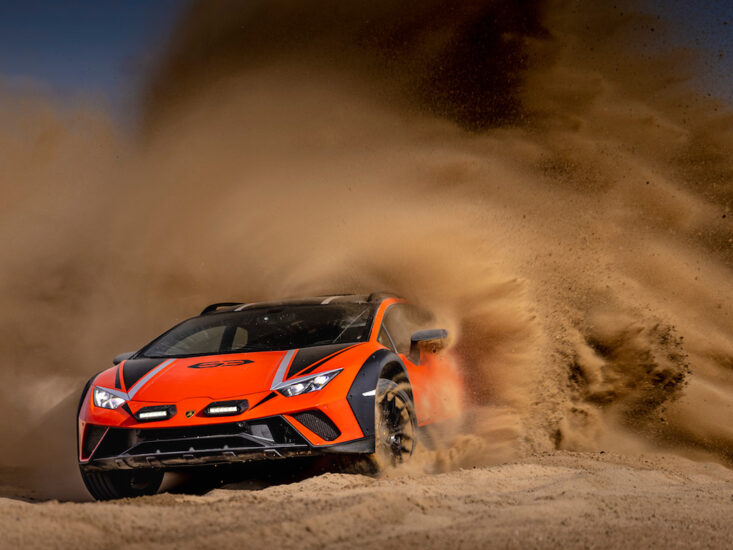
Rather than disengaging the drive to the front differential, Rally Mode loosens up the electronic safety net, enabling tail-out antics on dirt surfaces. You’re not entirely left on your own, though, as the system has been calibrated to intervene if sensors indicate a spin is imminent.
The combination of all-terrain tyres, a 44 mm higher ride height and a softer suspension setup means it pitches and rolls slightly more than the Tecnica, and certainly when compared to the hardcore STO. This isn’t necessarily a bad thing, though. Yes, the Sterrato isn’t going to set lap records at the Nurburgring Nordschleife, but that’s, in any case, not particularly relevant in terms of day-to-day driving.
Setting off on our road loop through the largely barren landscape of southern California, it soon becomes clear the Sterrato is kinder to your spine than other Huracans. Added suspension travel plus taller tyres certainly help here.
Eventually, the opportunity presents itself to push through a few corners, and the Sterrato responds with greater crispness than I had imagined. I figured the all-terrain tyres would dull the steering response and introduce a slight delay between making a steering input and the car actually turning. This isn’t noticeably the case, though, which indicates that the work Bridgestone has done to make an AT tyre feel more like a tarmac-focused performance tyre has paid off.
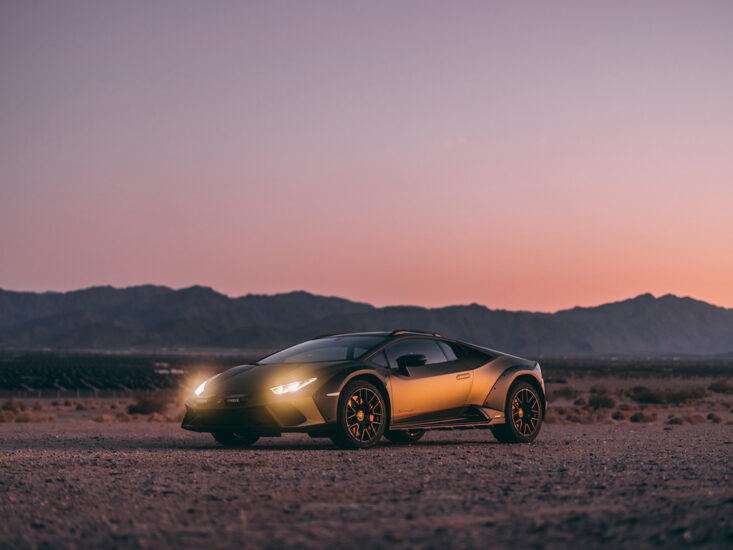
Yes, ultimately, the car slides earlier than the STO and Tecnica, but whereas that might lead you to conclude this would dampen fun levels, the opposite is the case.
The key point is that breakaway is much more progressive in the Sterrato than its siblings, making its dynamic envelope much more accessible to drivers of all levels. With an STO, the limits are stratospherically high, and when the rear end breaks away, it does so with far less warning, which means most pilots will only scratch the surface of its capabilities.
But the real fun in the Huracan Sterrato begins when you engage Rally mode and cut loose on gravel. The Lamborghini events team had set up a rallycross stage at Chuckwalla Valley Raceway that showcased the car’s prowess on both tarmac and dirt, and this was a masterstroke.
You can probably glean from our onboard video that the Sterrato loves to slide (Rally mode gives you plenty of scopes to do this), but it’s so easily reined in that you never feel in danger of spearing off into the weeds.
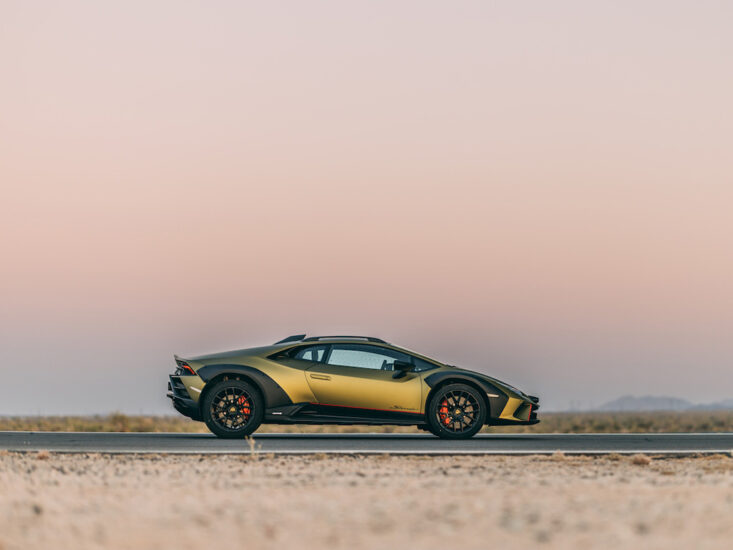
Cleverly, the LDVI electronic brain that controls the chassis has been programmed to help you get the car rotated through tight corners and slingshot out of them. It does this partly by configuring a more rear-biased AWD system in Rally mode, but that’s only the start.
Other measures include braking the inside front wheel on the corner entry to help you initiate the turn, and then as you get on the gas in mid-corner, more torque is sent to the outside rear wheel so you can use the throttle to steer the car. As soon as you begin to wind off the steering lock, added torque is directed to the front wheels, so all four tyres can hook up and launch you down the next straight.
It all adds up to a laugh-out-loud experience, making you realise this seemingly far-fetched Huracan variant was a rather good idea.
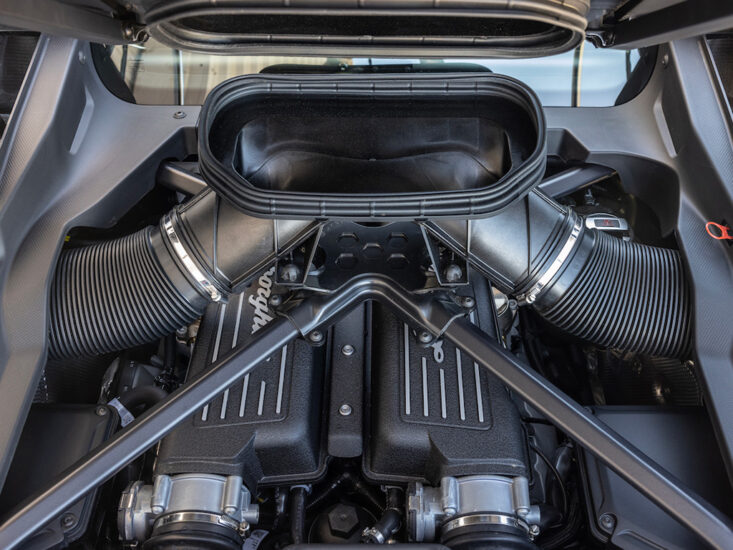
The V10 in this application is in a slightly lower state of tune than in the STO/Tecnica, pushing out 610 hp rather than the 640 hp that its siblings have at their disposal (this is partly due to the Sterrato’s revised induction system that’s fed by the roof snorkel).
Nevertheless, acceleration remains undiminished, with the Sterrato dispatching 0-100 kph in 3.4 seconds and sprinting from 0-200 kph in 9.8 seconds. The Sterrato’s all-terrain tyres and jacked-up height means v-max is electronically limited to 260 kph. Still, a higher top speed is, in any case, academic anywhere other than derestricted autobahns and racetracks with especially long straights.
Per its Huracan siblings, the Sterrato comes standard with carbon-ceramic stoppers comprising ventilated rotors measuring 380×38 mm and 356×32 mm front/rear, gripped by six-piston front and four-piston rear callipers. As a result, the Sterrato wipes off speed just as ferociously as it piles it on, coming to a standstill from 100 kph in just 39 m.
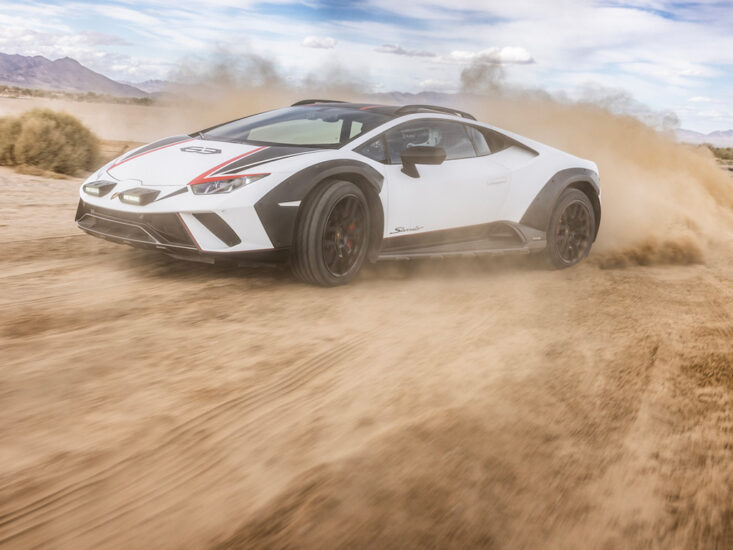
Early in the Sterrato’s testing and development phase, a few radiators and front differentials were destroyed as Lambo’s pro drivers flogged the prototypes across rough terrain. The remedy was adding aluminium underbody protection at the front, which shielded the radiator and front differential without adding too much weight.
That said, the underbody protection is not intended to absorb heavy impacts, as Lamborghini CTO Rouven Mohr says that would have required a steel bash plate, which would have added 55 kg to the car’s weight. As it is, Lamborghini quotes a dry weight of 1470 kg for the beefed-up Sterrato, which is 91 kg more than the Huracan Tecnica.
Another lesson learnt from early prototype forays on loose surfaces was that the V10 didn’t enjoy ingesting dust and gravel when drivers raised plumes while drifting around. The solution was to incorporate a roof snorkel positioned in a channel of clean air, ensuring the 5.2-litre engine doesn’t gulp down a mouthful of dirt.
The Huracan Sterrato is certainly up to the challenge of blasting across dirt roads and hard-packed sand. But if you have any illusions of conquering sand dunes or ploughing through sticky mud, you can lay those to rest, as that’s not what the car was conceived for.
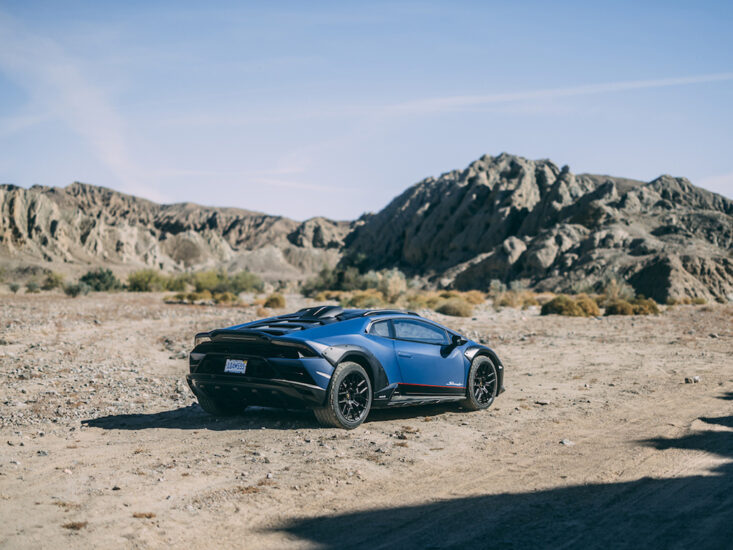
Apart from its revamped chassis setup, the Huracan Sterrato is easily distinguishable from its siblings. Its bespoke fog lights, plastic wheel arch flares and roof racks immediately identify it as a markedly different offering.
The differences continue inside as Alcantara Verde Sterrato upholstery is a default trim offering (but of course, there are other choices). At the same time, the HMI interface has new graphics and special features that are specific to the Sterrato. Among these is a digital inclinometer that shows pitch and roll, and there’s also a compass, geographic coordinate indicator and steering angle display.
There’s also a connected telemetry system that allows drivers to monitor their performance data via the UNICA app, while the Lamborghini Drive Recorder allows the driver to record video footage of their stint behind the wheel.
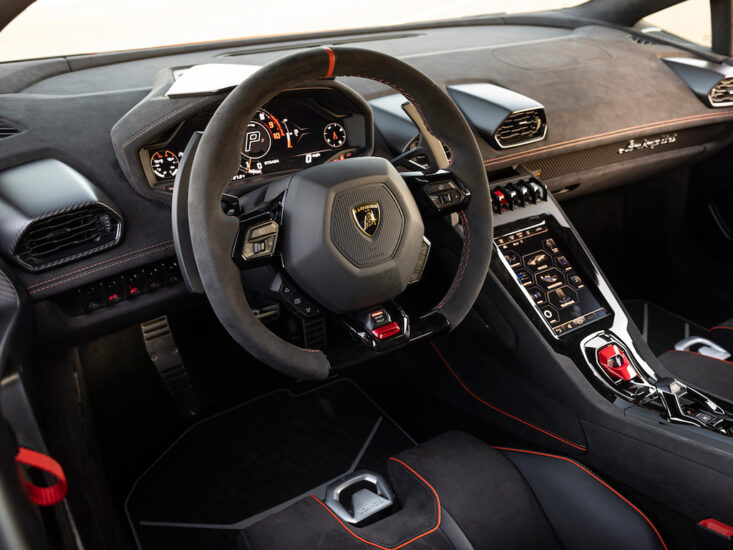
The Huracan Sterrato isn’t dramatically different to its siblings inside, apart from the bespoke trim options and HDMI interface unique to this model. Besides that, the look and feel will be familiar to anyone who’s spent time in a recent Huracan.
One thing to note is that plumbing for the roof snorkel completely obscures the view out the back window, so rearward visibility in the Sterrato is particularly poor. There’s also the other Huracan limitation of insufficient oddments space and cubbyholes in the cabin, which means there’s nowhere to keep a 500ml bottle of water. It’s quite likely the all-new Huracan replacement that’s due to surface next year will address these issues.
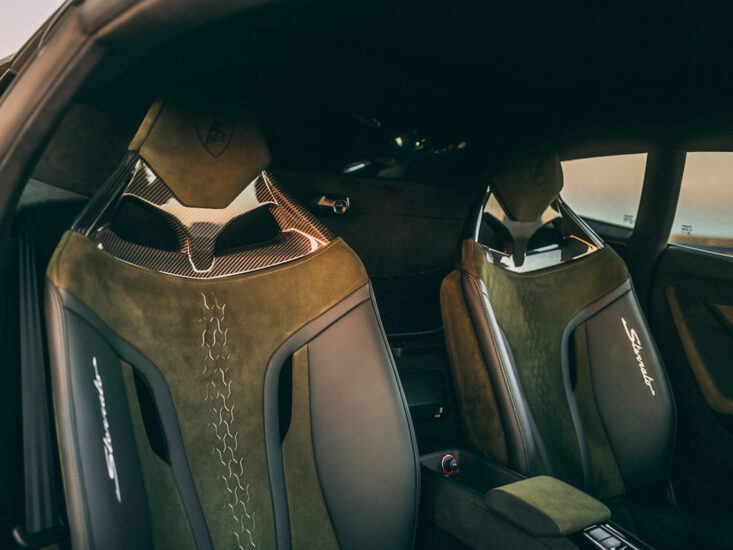
Before driving the Lamborghini Huracan Sterrato, we figured it might turn out to be a cynical marketing ploy with more image than substance. However, having put it through the wringer on tarmac and gravel, we conclude that it’s the most entertaining and sensible (as unlikely as that seems) model in the Huracan line-up.
The Huracan Sterrato’s huge fun factor is indisputable. At the same time, the added usability stemming from its compliant ride and ability to sail over speed humps, potholes etc., is the icing on the cake.
2023 Lamborghini Huracan Sterrato specs
Engine 5.2-litre V10
Power 610 hp at 8,000 rpm
Torque 560 Nm at 6,500rpm
Transmission 7-speed dual-clutch auto
0-100kph 3.4 seconds
0-200kph 9.8 seconds
Top speed 260 kph
Length 4,525 mm
Width 1,956 mm
Height 1,248 mm
Wheelbase 2,629 mm
Ground clearance 171 mm
Weight 1,470 kg (dry weight)
Tyres Bridgestone Dueler All Terrain (235/40R19 front; 285/40R19 rear)
Price Approx Dh1.1 million before personalisation
On sale End of 2023
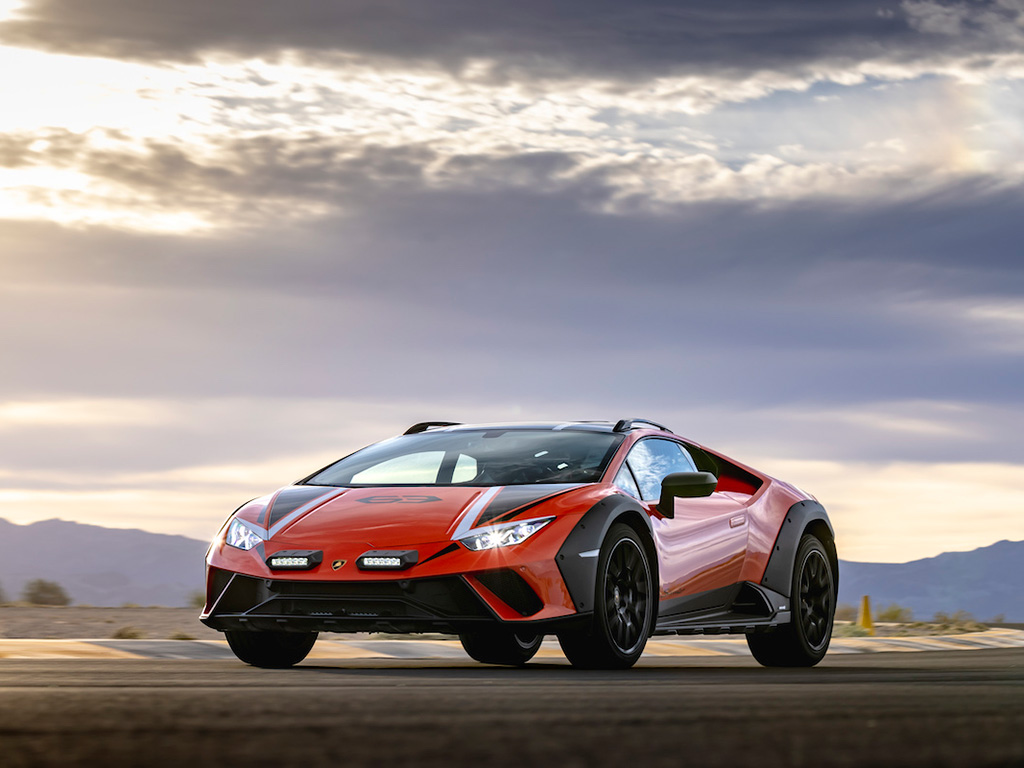


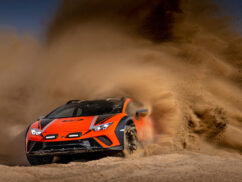
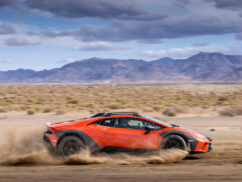

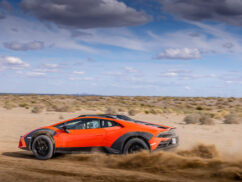








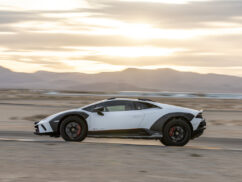
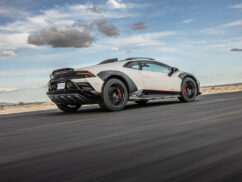


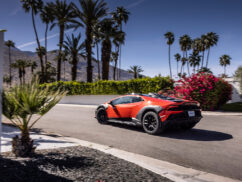
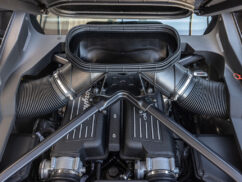

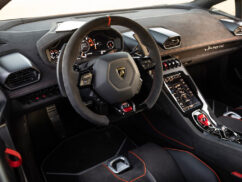


Comments
Nabajyoti Baishya
This going to be the ideal supercar for Inidan roads
Royaltech
Great post! The Lamborghini Huracan Sterrato looks absolutely stunning and powerful. It’s amazing to see how Lamborghini continues to push boundaries and innovate with their vehicles. The off-road capabilities showcased in this model are truly impressive.